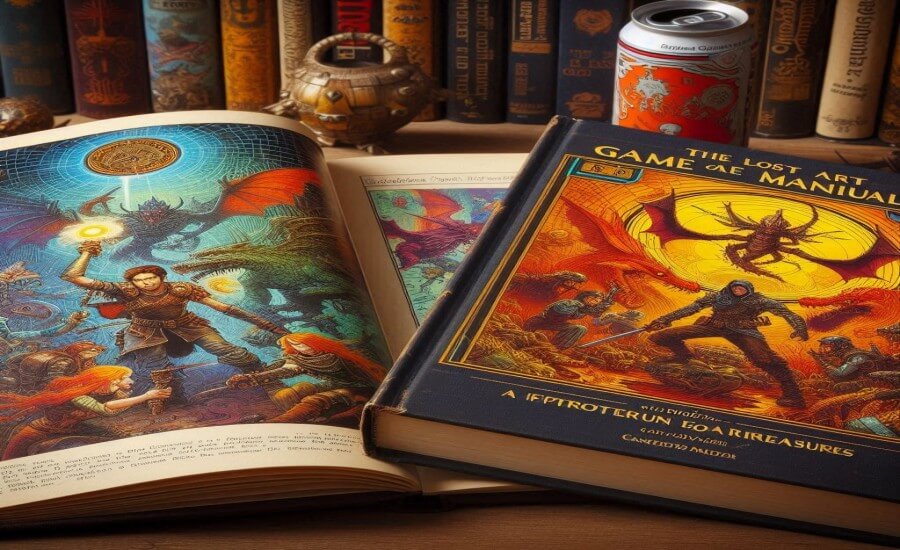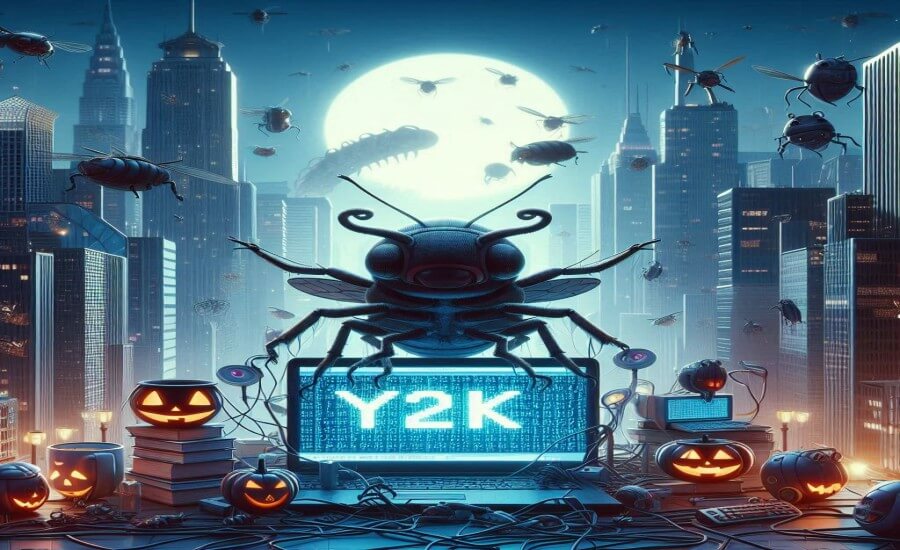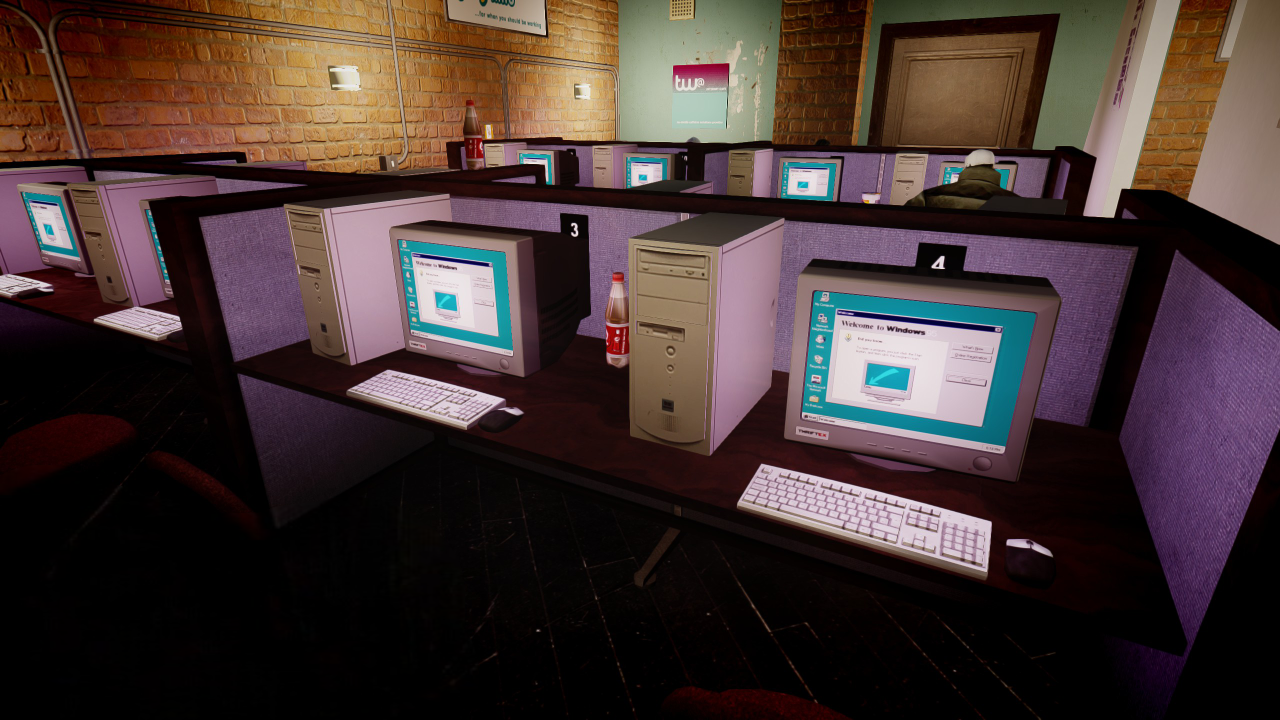Picture a modern holiday scene, perhaps Diwali night here in Vadodara, or Christmas morning anywhere in the world.The way we celebrate holidays has evolved dramatically over time, and much of that transformation is due to how Technology Changed Holidays History. The air is filled with festive scents and sounds.
But look closer: Grandma isn't just listening to her grandkids on a crackly international call; she's seeing them laugh and open gifts in high-definition video on a tablet, connecting instantly with family members in Mumbai, London, or New York via WhatsApp Video or FaceTime.
Festive photos, complete with sparkling AR filters from Instagram or Snapchat, are being shared in real-time across family groups.
Someone’s Browse Flipkart’s Big Billion Days or Amazon's Great Indian Festival sale for last-minute deals on their phone. Later, the kids might excitedly track Santa’s progress across the globe using NORAD’s official app.
This seamless integration of technology into our most cherished celebrations feels normal now, but it represents a profound shift.
Technology hasn't just changed how we celebrate; it has actively rewritten old traditions and created entirely new ones, weaving itself into the very fabric of the festive season.
As technology changed holidays history, it didn’t replace traditions—it redefined them, blending the old with the new.
Understanding how technology changed holidays history offers insight into our modern celebrations and how they continue to evolve in a connected world.
Connecting Across Continents (& Cities): The Virtual Family Gathering
Perhaps technology changed holidays history most significant impact on holidays is its ability to shrink distances, transforming how families connect during special times.
Tradition Transformed: Video Calling
- The Old Way: Expensive, crackly International Subscriber Dialing (ISD) calls, booked in advance, often with everyone shouting down the line to be heard. Or simply relying on mailed letters and photos arriving weeks later.
- The Tech Pioneers: Early Voice over IP (VoIP) services began the shift, but it was Skype (launched 2003, acquired by Microsoft 2011) that popularized free or cheap computer-to-computer voice and video calls globally.
- Apple's FaceTime (launched 2010) made mobile video calling effortless between Apple devices. Later, WhatsApp Video, Google Meet/Duo, and Zoom made high-quality video calls ubiquitous across platforms and mobile devices.
- The New Tradition: Seeing loved ones' faces in real-time during festivals like Diwali, Christmas, Eid, or Raksha Bandhan, regardless of geographical separation. Grandparents watch grandkids open presents; families light diyas together across continents.
- Video calls became especially crucial for virtual celebrations during the COVID-19 pandemic lockdowns, cementing their role as a modern holiday staple for connecting dispersed families.
- Impact: Made visual, real-time connection across distances affordable and accessible, fundamentally changing the dynamic of holiday family interactions for globalized families, including the vast Indian diaspora.
- One of the clearest examples of how technology changed holidays history is the rise of video calling. In the past, staying connected with loved ones during the holidays meant sending letters or making expensive long-distance phone calls.
- It's a powerful reminder of how technology changed holidays history, turning physical distance into virtual closeness. As digital tools continue to evolve, so too will the way we celebrate, proving that tradition can adapt without being lost.
Tradition Transformed: Holiday Greetings
- The Old Way: Sending physical greeting cards via postal mail, requiring planning, postage costs, and time.
- The Tech Pioneers: Early websites like Blue Mountain Arts (popular mid-90s onwards) pioneered e-cards – digital greetings sent via email, often featuring simple animations (using Flash later) and music. Other sites like American Greetings followed.
- The New Tradition: While dedicated e-card sites have waned, digital greetings thrive. WhatsApp forwards containing festive images, GIFs, or short videos are massively popular in India for festivals like Diwali, Holi, and New Year.
- Personalized digital greetings shared via social media (Facebook posts, Instagram Stories) or direct messages have largely replaced physical cards for many, offering instant delivery and multimedia elements at little to no cost.
- Impact: Shifted festive greetings from physical post to instant digital messages. Lowered cost and effort but perhaps also reduced the personal touch of a handwritten card for some. Created new forms of mass digital well-wishing, especially prominent during Indian festivals.
- The way we celebrate holidays today is vastly different from the past, all because technology changed holidays history.
Parallel Developments (Mid-90s - Present)
- Growth of internet penetration and speeds (dial-up -> broadband -> mobile data).
- Rise of personal computers, then laptops, then smartphones and tablets.
- Development of VoIP protocols and video compression technologies.
- Social media platforms become central communication hubs.
User Experience Snapshot
Remember the joy (and maybe slight awkwardness) of your first family Skype call during a festival? Seeing relatives clearly instead of just hearing their distant voices? Or the ease of forwarding a festive WhatsApp image to dozens of contacts in seconds?
Technology collapsed distances, making shared holiday moments possible in ways previously unimaginable, even if it sometimes felt less tangible than a mailed card or an in-person hug.
The Digital Hearth: On-Demand Holiday Entertainment

How we entertain ourselves during holidays has also been fundamentally reshaped by technology.
Over the years, technology changed holidays history in remarkable ways. Traditional celebrations that once relied on face-to-face gatherings and handwritten cards have transformed with the rise of digital communication.
Clearly, technology changed holidays history by reshaping how we connect, celebrate, and create memories.
As the world continues to advance, so too will our holiday traditions—forever influenced by the way technology changed holidays history.
Tradition Transformed: Holiday Viewing & Listening
- The Old Way: Relying on broadcast TV schedules for holiday specials, movie marathons, or Queen's Christmas Message. Playing festive music from owned CDs or cassettes.
- The Tech Pioneers: Streaming services like Netflix (streaming from 2007), Amazon Prime Video, Hotstar/Disney+ (especially relevant in India), Spotify, Apple Music, etc.
- The New Tradition: On-demand access to vast libraries of holiday movies, TV episodes, and music playlists. Binge-watching festive content anytime, anywhere.
- Personalized holiday music recommendations via algorithms. Creating and sharing collaborative holiday playlists. The shared experience shifts from synchronized broadcast viewing to personalized, on-demand consumption.
- Impact: Liberated holiday entertainment from schedules and physical media. Provided vastly more choice but potentially fragmented the shared cultural experience of watching specific broadcast specials together.
Tradition Transformed: Festive Gaming
- The Old Way: Maybe playing board games or a new console game received as a gift.
- The Tech Pioneers: Online multiplayer games and live service platforms (from World of Warcraft to Fortnite, Call of Duty, PUBG Mobile/BGMI in India).
- The New Tradition: In-game holiday events become a standard feature. Games receive temporary festive makeovers (snowy maps, holiday decorations), special limited-time modes, themed cosmetic items (skins, emotes) to unlock or purchase, and community challenges, creating recurring digital traditions within gaming communities.
- Impact: Integrated holiday themes directly into ongoing online games, creating timely engagement and shared experiences for players, often driving in-game spending.
Tradition Transformed: The Year-End Recap
- The Old Way: Reflecting on the year personally or perhaps through year-end news roundups.
- The Tech Pioneer: Spotify Wrapped (started as "Year in Music" 2015, branded Wrapped 2016).
- The New Tradition: Spotify Wrapped arrives in late November/early December, providing users with a personalized, data-driven, shareable slideshow of their listening habits (top artists, songs, genres, minutes listened).
- It has become a massive annual social media phenomenon, with millions sharing their results, comparing tastes, and reflecting on their year through the lens of music – a tradition entirely created and facilitated by a tech platform's data analysis and marketing savvy. Other platforms (YouTube Music, etc.) have followed suit.
- Impact: Created a new, widespread digital ritual focused on personal data, self-expression, and social sharing, perfectly timed for end-of-year reflection and driven entirely by a tech company.
Parallel Developments (2000s - Present)
- Broadband enables streaming video and music.
- Digital music players give way to streaming apps.
- Online gaming becomes a massive, persistent industry.
- Data analytics and personalization algorithms become highly sophisticated.
User Experience Snapshot
Curling up to stream Home Alone or Love Actually whenever you feel like it, instead of waiting for it to appear on TV.
Logging into your favorite online game to see it decked out in festive decorations and special events.
The annual anticipation (and sometimes embarrassment) of seeing your Spotify Wrapped results and sharing them with friends. Tech provides endless, personalized holiday entertainment streams.
Shopping Goes Cyber: The Rise of Holiday E-Sales

Perhaps nowhere is tech's impact on holidays more visible than in how we shop for gifts and festive goods.
Tradition Transformed: Holiday Shopping Sprees
- The Old Way: Braving crowded malls and high streets, queuing for hours, dealing with limited stock – especially during post-Thanksgiving Black Friday sales in the US or pre-Diwali shopping rushes in India.
- The Tech Pioneers: Early e-commerce sites laid the groundwork, but Amazon globally, and platforms like Flipkart in India, were key in popularizing massive online sales events.
- The New Tradition: Black Friday and Cyber Monday evolved from primarily US-based, in-store events to global, week-long online sales extravaganzas.
- In India, e-commerce giants created their own flagship events centered around major festivals, particularly Diwali, with Flipkart's Big Billion Days and Amazon's Great Indian Festival becoming massive annual shopping traditions driving enormous sales volumes.
- Online deal-hunting, flash sales, and comparison shopping from home have become standard holiday behaviors.
- Impact: Fundamentally shifted holiday retail from physical stores to online platforms. Created new, highly commercialized shopping "traditions." Increased convenience for shoppers but also fueled consumerism and impacted traditional retail.
- Holiday shopping used to mean long lines, crowded malls, and frantic last-minute dashes. But technology changed holidays history, and with it, the entire shopping experience.
- This shift clearly shows how technology changed holidays history, turning hectic shopping sprees into personalized, digital traditions that fit into modern lifestyles while still capturing the joy of giving.
Tradition Transformed: Gifting & Wish Lists
- The Old Way: Guessing gift preferences, dealing with unwanted gifts, mailing physical gift certificates.
- The Tech Pioneers: Online retailers (Amazon leading the way), gift registry sites.
- The New Tradition: Creating and sharing digital wish lists makes gifting easier and more targeted. Digital gift cards, delivered instantly via email or app, replace physical ones, perfect for last-minute or long-distance gifting. Sending gifts directly from online retailers to the recipient's address simplifies logistics.
- Impact: Made gift-giving more efficient and often more targeted, though perhaps less personal for some. Simplified long-distance gifting significantly.
Parallel Developments (Late 90s - Present)
- Maturation of e-commerce platforms and logistics networks.
- Development of secure online payment systems.
- Rise of comparison shopping websites and deal alert apps.
- Mobile commerce (m-commerce) becomes dominant via smartphones.
User Experience Snapshot
The thrill (or stress) of staying up late for the launch of the Big Billion Days sale, hoping to snag that heavily discounted phone or TV. Scrolling endlessly through online deals instead of navigating crowded markets.
Creating an Amazon wish list instead of dropping hints. Receiving an instant digital gift card via email. Online platforms have become central command for holiday shopping.
Tracking Magic & Sharing Moments: Experiential Tech
Technology changed holidays history has also subtly woven itself into the experiential and magical aspects of the holidays.
Tradition Transformed: Following Santa
- The Old Way: Listening for sleigh bells, leaving out milk and cookies, relying on imagination and parental assurances.
- The Tech Pioneer: NORAD (North American Aerospace Defense Command) and its predecessor CONAD.
- The New Tradition: NORAD Tracks Santa. This beloved tradition started accidentally in 1955 when a misprinted Sears ad directed children wanting to call Santa to the hotline of the Continental Air Defense Command (CONAD). Colonel Harry Shoup initially played along, and a tradition was born.
- Evolving from phone updates and radar screens, today NORAD uses a sophisticated website, mobile apps, social media, and partnerships with tech companies to provide 'real-time' updates on Santa's Christmas Eve journey, complete with maps, videos, and games. Millions follow along globally each year – a tradition born from a mistake but sustained and amplified by technology.
- Impact: Created a magical, interactive, tech-driven experience around a traditional holiday figure, engaging children and families worldwide.
Tradition Transformed: Capturing & Sharing Memories
- The Old Way: Taking photos with film cameras, waiting days/weeks for development, sharing physical prints or albums later. Making expensive home videos on camcorders.
- The Tech Pioneers: Digital cameras, then smartphones with high-quality cameras. Social media platforms (Facebook, Instagram), photo sharing apps, messaging apps (WhatsApp).
- The New Tradition: Instantly capturing high-quality photos and videos of festive moments on smartphones. Immediately sharing them with family and friends globally via WhatsApp groups, Instagram Stories (often with holiday-themed AR filters), or Facebook albums. Creating a real-time, visual narrative of holiday celebrations shared widely.
- Impact: Made holiday memory capture and sharing instantaneous and effortless. Created new pressures around presenting a 'perfect' holiday online. Allowed for real-time participation in distant celebrations through shared visuals.
Parallel Developments (2000s - Present)
- Digital cameras become ubiquitous, then replaced by smartphone cameras.
- Social media platforms become primary channels for sharing personal updates and photos.
- Augmented Reality (AR) technology matures on mobile devices.
- Smart home technology (lights, speakers) allows for automated festive decorations and ambiance.
Brands Spreading Cheer (or Ads): Marketing as Tradition
Tech companies themselves have created traditions through consistent, high-profile holiday marketing.
Tradition Transformed: The Emotional Holiday Ad
- The Old Way: General holiday advertising from various brands.
- The Tech Pioneer: Apple, in particular.
- The New Tradition: Apple's annual holiday commercials have become highly anticipated events. Moving beyond simple product showcases (common in their early ads), Apple shifted in the 2010s (notably with 2013's Emmy-winning "Misunderstood" ad) towards emotional storytelling, focusing on themes of family, connection, creativity, and inclusion, with their products subtly enabling these moments. These ads often generate significant discussion and set a tone for holiday marketing, becoming minor cultural traditions in themselves.
- Impact: Positioned a tech brand strongly within the emotional context of the holidays, influencing advertising trends and creating anticipation for the ad itself.
- One powerful way technology changed holidays history is through the rise of emotional holiday advertisements.
- This shift in how we connect emotionally during the season shows how deeply technology changed holidays history, blending storytelling, marketing, and tradition into one powerful medium. As our screens become part of our celebrations, so too do the stories we see on them.
Tradition Transformed: Daily Digital Decorations
- The Old Way: Advent calendars, maybe newspaper holiday sections.
- The Tech Pioneer: Google.
- The New Tradition: Google Doodles celebrating various holidays (Christmas, Hanukkah, Kwanzaa, New Year, Diwali, regional festivals) have become a small but expected part of the online landscape during festive periods, offering a touch of whimsy and recognition on the world's most visited homepage. Google also often includes holiday-themed Easter eggs in search.
- Impact: Provides a daily, ephemeral nod to global holidays and cultural celebrations within a core digital tool, normalizing digital recognition of festive periods.
Why Tech Took Root: Convenience, Connection & Commerce
Technology became so deeply embedded in our holidays because it offered compelling solutions to modern needs and desires:
- Connection: Bridged geographical distances for increasingly dispersed families.
- Convenience: Simplified shopping, entertainment access, and sending greetings.
- Cost: Often provided cheaper alternatives (video calls vs. ISD, e-cards vs. mail).
- Commerce: Capitalized on the massive commercial aspect of holidays through targeted sales and marketing.
- Creativity: Provided new tools for self-expression and sharing experiences.
- Culture: Reflected and amplified the shift towards a more digital, globally connected society.
Full Circle Reflections
From the crackle of an international phone call to the crystal-clear video chat with relatives overseas, from waiting weeks for holiday photos to sharing filtered selfies instantly, from braving market crowds to hunting for deals online during the Great Indian Festival – technology has irrevocably changed our holiday traditions.
Pioneers like Skype, Amazon, Flipkart, Apple, Google, and even NORAD haven't just provided tools; they've actively shaped new rituals and redefined old ones.
Video calls reunite families across miles, streaming services curate our festive soundtracks, e-commerce giants orchestrate massive sales events, and social media platforms become our shared holiday albums.
While these digital traditions offer unprecedented convenience and connection, they also raise questions about commercialization, screen time replacing presence, and the nature of authentic celebration in an always-on world.
Yet, one thing is clear: the code for cheer has been written, and technology is now as much a part of the holiday season as twinkling lights and festive food, reflecting the digital heartbeat of our modern lives.
The Heritage Impact: Holidays Re-Encoded
Technology's influence on holidays has created lasting impacts:
- Globalization of Celebrations: Easier to share and participate in diverse cultural traditions (like Diwali) globally.
- Redefined Family Connection: Made visual, real-time connection the norm for dispersed families.
- Transformed Retail: Permanently shifted holiday shopping towards online channels and created new sales traditions.
- Personalized Entertainment: Moved consumption from broadcast schedules to on-demand, algorithmic curation.
- New Forms of Sharing: Made instant sharing of moments via social media central to the holiday experience.
- Created Brand Traditions: Allowed tech companies to embed themselves into the season through iconic advertising and features.
Our holidays are now hybrid experiences, blending cherished offline customs with inseparable digital rituals.
FAQ: Tech & Holiday Traditions
- How did video calls change holiday family gatherings?
Video calling services like Skype, FaceTime, WhatsApp Video, and Zoom made it possible for geographically separated families to connect visually in real-time during holidays. This replaced expensive, audio-only international calls and allowed for richer shared experiences like watching gifts being opened or participating virtually in celebrations. - Did technology kill the traditional holiday card?
For many, yes. Early e-card websites, and more significantly, the rise of social media and instant messaging (like WhatsApp), made sending digital greetings (posts, messages, images, videos) faster, cheaper, and easier than mailing physical cards. While some still send physical cards, digital greetings are now the norm for a large portion of the population, especially for festivals like Diwali or New Year in India. - How did online shopping create new holiday traditions?
E-commerce platforms transformed holiday shopping from a primarily physical activity into a major online event. They created new "traditions" like hunting for deals during massive online sales events such as Black Friday, Cyber Monday, and, particularly in India, festival-centric sales like Flipkart's Big Billion Days or Amazon's Great Indian Festival. - What's the story behind NORAD Tracks Santa?
It began accidentally in 1955 when a Sears newspaper ad misprinted a phone number for kids to call Santa. The number actually went to the Continental Air Defense Command (CONAD), NORAD's predecessor. Colonel Harry Shoup answered, played along, and instructed his staff to give updates on Santa's location. NORAD continued the tradition, evolving from phone/radio updates to using radar, satellites, websites, apps, and social media to "track" Santa's journey on Christmas Eve, becoming a beloved global tradition enabled by military technology. - Are tech-driven traditions replacing older holiday customs?
It's often more accurate to say they are augmenting or modifying older customs rather than completely replacing them. Video calls supplement in-person visits, online shopping coexists with physical store visits, streaming complements watching traditional specials. Technology often provides new ways to enact or share traditional activities, reflecting how digital tools are integrated into all aspects of modern life.




